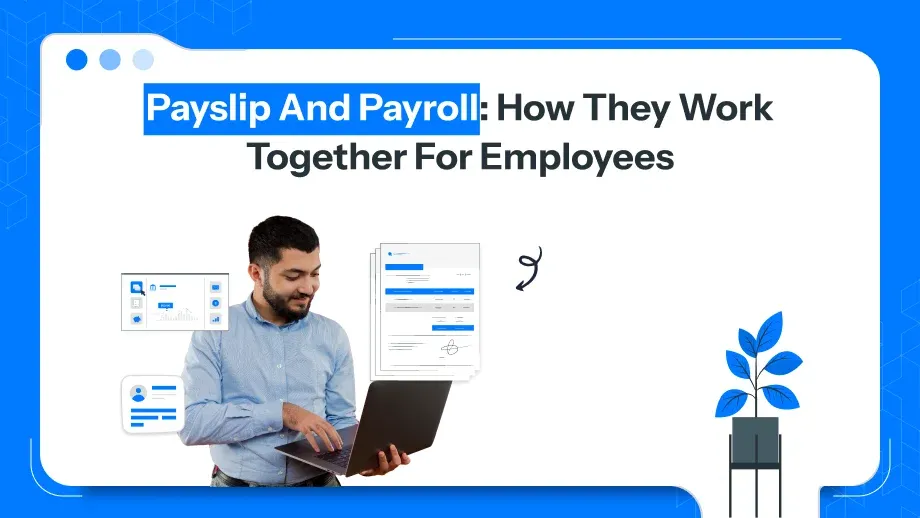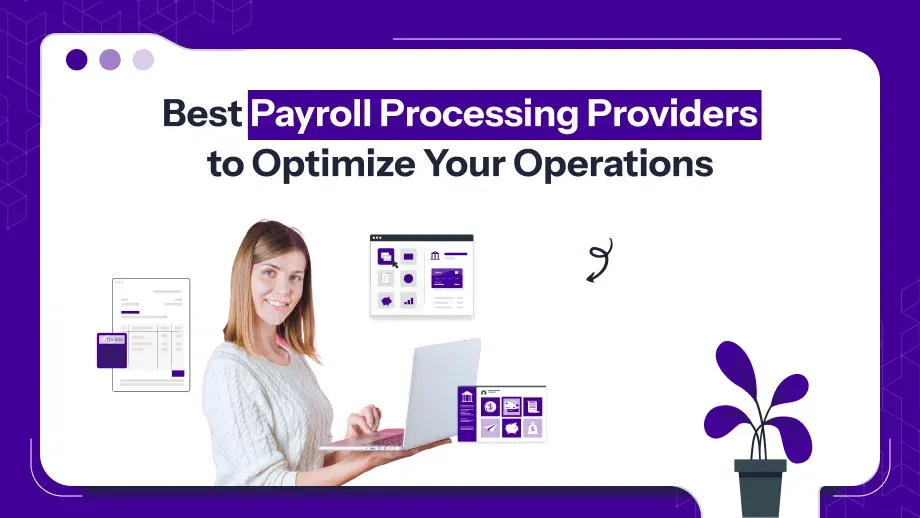
The payroll management and payroll document is an aspect of running a business is crucial as it makes sure the employees are paid the correct amounts and at the right time, while still complying with the tax regulations. The process of maintaining documents is a crucial aspect of the payroll management process. The document serves as an essential source of information to businesses and their employees about the earnings, taxes, and deductions, among other things.
Payroll documents are important for businesses as they maintain transparency, aid in financial reporting, and help to meet compliance standards. For employees, these documents provide proof of income, giving them insight into their earnings, benefits, and tax obligations. In addition, payroll records are required for tax filings, audits, and employee benefits administration.
They help businesses track labor costs, review compensation strategies, and make sure there are no mistakes in calculating wages, overtime, or benefits. In short, accurate and updated documents will help in legal compliance as well as smooth business operations ensuring that all financial transactions
Types of Payroll Documents
Payroll documents are very important to an organization for managing compensation, tax reporting, and compliance. The document reflects the detailed account of a personnel’s earning, deduction, and all other financial transactions. Following are the different types of payroll documents that businesses use in order to maintain the right payroll.
1. Pay stubs
One of the most often given payroll papers to workers is undoubtedly a pay stub, sometimes referred to as an earnings statement or pay slip. It provides a breakdown of a worker’s earnings for a particular pay period, including:
- Gross Pay: Total income after all deductions, including bonuses, overtime, hourly wages, and bonuses.
- Deductions are all amounts taken from gross pay, such as health insurance premiums, social security, Medicaid, federal and state income taxes, and retirement taxes.
- Net Pay: The final amount of take-home that the employee gets after making deductions from pay.
A paycheck stub is usually attached to every check (for those paid by check) or made available online (for direct deposit).
2. Payroll Summary Report
The payroll report is a detailed sheet that indicates the payroll information about all workers in a given period, mainly monthly or every two weeks. It contains;
- Total Earnings: The total sum of money paid to all the employees in gross.
- Total Deduction: All the deductions against all workers’ earnings, (tax, insurance, etc).
- Employer Contributions: A sum contribution by the employer to worker benefits, say health care or retirement plan.
- Net Payroll: The total net pay for all employees after deductions.
The accounting and auditing of this report helps track the labor expense of the company and ensures that the taxation rules are followed.
3. Timesheets and Attendance Records
Payroll documents used for businesses paying employees who get paid according to hours they work are time sheets and attendance records. These indicate:
Hours Worked Hours worked by an employee for a particular period.
- Extra hours:beyond the typical week at work that are frequently compensated at a higher rate than usual are known as overtime hours.
- Time Off: Vacation weeks, sick leave, paid time off (PTO), or any other leave that the employee takes.
Timesheets can be tracked on paper or, if not, with automated methods like software or time clock.
Timesheets can be paper-based or, in most cases, tracked using automated systems like time clocks or software. These documents make sure that the hour wage earners get paid for all the time they have spent working and help avoid errors in payrolls.
4. Authorization Forms for Direct Deposit
Payrolls are now paid in part via direct deposit. A payroll form known as a “direct deposit authorization” asks an employee to specify which bank account they would like their paychecks to be paid into. The following usually appear in such a payroll paper:
- Bank Name and Account Type: Whether the employee’s bank account is in a checking or a saving account.
- Routing Number: The number that identifies where the bank is the routing number of the particular bank.
- Account Number: Number of the employee’s account where the funds will be deposited.
This form allows a payroll to be processed and error-free, offering a fast and secure method in which employees can get paid.
5. Agreement on Employee Compensation
An employee compensation contract specifies the terms of an employee’s remuneration, including their salary, bonus structure, perks, and other forms of financial advantages. The importance of this pay document is justified by the reasons that follow:
- In order to guarantee that the employer and employee are in agreement, the agreed-upon wage arrangement is well-defined.
- By establishing expectations for pay raises, bonuses, and other forms of compensation, it avoids disputes.
Additionally, it could include details regarding profit-sharing schemes, stock options, and commissions.Typically, this contract is signed at the beginning of work and is frequently revised over time.
6. Garnishment Orders
A garnishment order is a legal document that directs an employer to withdraw a portion of an employee’s earnings if the worker has a wage garnishment (for items like child support, school loans, or tax payments).
The order specifies:
- The percentage or total amount to be withheld from each paycheck is known as the “Amount to Refrain from.”
- The person or organization that should get the garnished earnings is referred to as the recipient.
To guarantee sure the right withdrawals are made, employers must abide by garnishment orders and incorporate them in the worker’s payroll records.
Companies need a thorough understanding of the various payroll document types in order to manage employee benefits, taxes, payroll report, deductions, and compensation appropriately. Every document, from timesheets and direct deposit approvals to pay stubs and tax forms, has a specific function in upholding legal compliance and accurate payroll records. Effective document management helps businesses increase operational effectiveness, avoid expensive mistakes, and build employee confidence and openness.
Streamline your payroll process with accurate and secure payroll document
Get started today!
Best practices in payroll documents management
Managing the payroll documents properly is necessary for the companies to achieve compliance, precision, and transparency. Satisfactory documentation in payroll system documentation eliminates errors, avoids the threat of audits, and safeguards both parties: the employer and employee. Below are the best practices on the management of documents ensuring accuracy, safety, and legal compliance.
1. Automate payroll processing
Automating the payroll process is the most efficient method of achieving precise payroll management. Due to the possibility of employee pay inequalities, incorrect filing of taxes, and payment delays, manual pay is highly prone to errors. The automated payroll software can simplify the process as a whole, including ensuring accurate calculations and the correct withholding of taxes.
2. Maintain Payroll records: organize and accessible
One of the key points for managing payroll documents is maintaining order. It would be easy to keep all of those documents on each employee track if there were an orderly way of doing things.
3. Payroll Data Is Safe
Since payroll consists of sensitive employee information such as Social Security numbers, bank accounts, and wage information, it is important to prevent unauthorized access to this data.
4. Maintain Compliance with Payroll Laws and Regulations
It is one of the most crucial activities in payroll management. Noncompliance with federal, state, or local payroll laws could be very costly and might involve hefty fines or legal action against one for not adhering to the tax laws or labor regulations.
5. Conduct Regular Payroll Audits
Best practice is auditing payroll documents regularly to ensure that everything is in order. Payroll audits help determine possible deviations, cover up fraud, and calculate correctly.
6. Train Employees on the Payroll Process
Education for the employees about payroll processes should be carried out because that is where transparency and trust are. When an employee understands how payroll is, including the deduction of taxes, the application of benefits, and how pay is computed, they will be trusting the system enough to report any mistakes or discrepancies.
Why are Payroll Documents Important?
Keeping proper payroll information is crucial for a business’s seamless and legal operation in addition to its effective operation. Records of employee pay, taxes, benefits, and other important financial information are kept in payroll paperwork. These papers are essential for business operations for a few reasons:
Legal Compliance
Payroll records are crucial for ensuring that a business conforms with local, state, and federal labor laws. These rules govern the payment of employees, the deductions made from their paychecks, and the provision of benefits. Payroll process documentation sample and records that have vanished or are inaccurate may violate these rules, which may result in audits, fines, or even a lawsuit. For example, without proper documentation of wage payments or misclassification of employees, serious legal consequences may arise. By keeping extensive and updated payrolls, firms show their promise to strictly adhere to labour laws thus avoiding legal dilemmas or costs.
Payroll Papers in Tax Remittance
Payroll documentations remain a critical necessity in tax filing. Firms are legally required to withhold certain percentages of taxes from employees’ wages to include income taxes, Social security, and medicare. Correctly determining and deducting these taxes is made feasible by payroll data, such as pay stubs and reports. Companies must also submit tax forms, including IRS Form 941, which reports payroll taxes. Accuracy and timely submission for tax files are ensured by proper payroll paperwork, which also helps firms fulfill their tax obligations. The tax authorities will impose fines, interest, and additional penalties for failing to file tax with accurate information.
Employee Confidentiality
Payroll check documents, mainly pay checks, allow employees to better understand their income, expenses, and benefits. Being transparent about how much an employee earns and what is being deducted or taken out (for example, taxes, health insurance premiums, retirement contributions) for him, employers can be in the compensation process. This transparency fosters trust between the employer and the employee, avoiding confusion or disputes regarding payment. The employee will have greater confidence that they are being fairly paid and according to the terms of their employment contract, given that they can easily access payroll records.
Financial Management
Payroll documents are very useful to any business for monitoring labor costs and measuring the firm’s financial performance. Payroll reports allow any business to understand trends in terms of manning, overtime, bonus, and other compensation-related items for budgeting and future cost considerations. For instance, if disproportionate growth in payroll expense is registered, the company can use the information to change or adjust the staffing level or reward package to make the outfit financially sustainable. Payroll records can also be helpful to business owners who need to estimate the overall cost of doing business operations. It would help them make effective financial decisions and plan to grow.
Record-Keeping for Audits
Records are also useful in audits. Payroll records and payroll reviews provide a historical record of employee payments and deductions. Payroll files are an essential component of demonstrating a company’s financial operations, regardless of whether the audit is internal or carried out by governmental organizations like the IRS. A company can protect itself from possible accusations of financial wrongdoing, tax evasion, or other irregularities if it has the right paperwork. Keeping accurate payroll records also helps firms avoid fines since they can easily produce the necessary documentation to demonstrate compliance in the event of an investigate
Review Payroll Reports Regularly
Regular reviewing of payroll reports is among the best practices that ensure accuracy and updates of payroll documents. Businesses can detect discrepancies early when they conduct regular audits .This is to ensure that all the pay, taxes, and deductions have been accurately calculated before submission. During these reviews, businesses also get to identify inconsistencies in the documents, including errors in employee hours and incorrect tax withholdings before the issues become more significant. Carrying out these reviews on a regular basis, whether weekly, bi-weekly, or monthly, helps the business correct errors immediately while minimizing the potential for non-compliance with employee payment in time and accurately.
Store Documents for the Required Period
Payroll records must be kept on file for a specific amount of time per law. For example, the IRS mandates that payroll documentation template and records be kept on file for a minimum of three years, though other states have lengthier retention requirements. All of these retention periods apply to various payroll records, including timesheets, pay stubs, returns for taxes, and other information pertaining to employee earnings and expenditures. Keeping records for the required period makes businesses ready in case of an audit and provides proof of labor law compliance. Failure to maintain these records will make it difficult to prove payroll information at the time of audits, which could lead to penalties or other repercussions. After the retention period is over, documents should be disposed of through safe physical shredding and permanent deletions of digital documents so there will not be a likelihood of data leakage.
Keep Records Organized
Organizing payroll records is the key to ensuring efficiency and compliance. Keep documents by employee, date, and document type, organized so they can be located quickly when needed. That is particularly important to business organizations managing large numbers of employees or having payroll in a complicated system. Organization of payroll records in electronic media is the most efficient method for most people. Cloud-based solutions can hold documents in a secure centralized location, which can be accessible from anywhere. Digital organization also allows businesses to back up these files and protect them against physical damage or loss. The business that still uses paper also needs to have a secure, properly organized filing system in place-a clearly labeled folder and cabinet for those sensitive pieces of information.
Payroll documents in HR and payroll
Human Resources and Payroll are very crucial departments in every business as they help ensure timely compensation of employees. Payroll documents represent the heart of the payroll process because they hold all data required for calculating an employee’s earnings, deductions, and any other financial records. Therefore, these documents are a significant necessity for payroll processing as well as maintaining compliance, managing employee benefits, and dealing with audits.
1 Payroll Records and Employee Details
Payroll documents within the HR and Payroll division will include all the records an employee needs to track their salary or compensation, as well as follow labor laws. There will be employee pay stubs, tax forms (W-2 or 1099s), attendance sheets, time cards, and deductions reports.All of them are elaborate accounts including gross wages, tax withholdings, health insurance and retirement contributions benefits, even paid time off, or bonuses.
All of these records will be required to be compiled and retained by the HR for every single employee either it is contractual, full-time, or part-time. The document will ensure that employees receive the proper remunerations and the business will meet all the pertinent payroll and tax rules.
2. Importance of Payroll Documents for HR Management
Maintenance of accurate payroll documents is important for the reasons enumerated for HR departments. First, these papers will form a transparent record of employee compensation to ensure employees get their pay in accordance with their employment contract and within the legal requirements. Payroll records also act as proof of employment, which can be crucial when employees apply for loans and other financial services for verification purposes.
Aside from that, HR teams need documents in handling benefits administration. To give one instance, accurate payroll records will be necessary in tracking the contributions of the employee to benefit plans, like health insurance or retirement plans. All of these must be shown properly in the employee’s compensation documents so that the HR team can manage benefits packages and can pay timely pension or retirement funds.
3. Payroll Records for Legal and Compliance Needs
In addition, payroll records support legal compliance. Payroll records should be maintained for a stipulated period in most regions. This will help the HR teams remain compliant with government regulations, labor laws and tax laws. For example, to verify the wage report and tax withholding, the IRS requires businesses to maintain payroll records at least for a period of three years.
They also help ensure compliance with labor laws. It will be easier to keep track of whether the employees are getting paid at least the minimum wage or whether the overtime pay or benefits are administered correctly. In case of audit or a dispute, it will help HR departments to defend the payroll practice of the company and prevent penalty charges.
4. Payroll Files for Proper tax reporting
The role of payroll documents in tax reporting cannot be overstated. This is because the information for tax documents in a company is found in the Payroll department, which must have details regarding the gross income, tax deducted, and benefits paid in an employee’s account. These forms include W-2 and 1099 for tax reporting purposes, with employees getting their income and tax withheld details among other things.
In case HR and Payroll lack clear and accurate payroll records, they will likely make incorrect tax fillings. This may eventually land the company with penalties, interest, or even an audit. Besides, HR teams use payrolls to ensure that annual wage statements are issued out to employees in time and thus enable them to prepare their tax returns correctly.
5. Effective Payroll Processing
From the payroll department’s standpoint, it is very important for them to have accurate documents to ensure that there is prompt and accurate payroll processing. This will involve checking the working hours of workers, determining wages, and applying the available deductions. Regardless of whether workers are either salaried or hourly, this payroll team uses records like timesheets, time cards, or attendance reports to compute pay. Through accurate documents, the computation is done correctly, and workers find the exact sum on payday.
HR departments may also use these records to track employee absences, overtime, and paid leave, ensuring that all payroll-related processes are accurately followed. Additionally, HR and Payroll teams work together to ensure that any changes in salary, bonuses, or benefits are reflected in the payroll systems, and this data is securely documented.
6. Payroll Document Storage and Security
HR and Payroll departments also have to store and secure documents. Payroll information is so sensitive because it contains a person’s Social Security numbers, bank account information, and personal addresses, therefore, it has to be safeguarded from unauthorized access. Most organizations now store documents digitally, often through secure cloud-based systems or payroll software that includes encryption and access controls. These systems are easily accessible to the authorized users in the HR and payroll departments even though they store payroll information safely.
The HR and Payroll teams must ensure that the physical payroll documents are kept in locked cabinets or file rooms for businesses that use paper records. Access to these records must be limited to HR personnel or payroll administrators, and physical documents must be destroyed or shredded when no longer needed, according to legal retention periods.
7. Payroll Reports for HR Decision-Making
Payroll documents provide the HR and management with valuable information to make decisions. Analyzing payroll data can help the HR department know the labor cost, trends in compensation, employee turnover, and even predict future hiring or compensation adjustments. Payroll reports also play a great role in budgeting since they detail labor expenses of various departments or teams.
HR can make informed decisions about employee retention, compensation adjustment, and the need for staffing by reviewing payroll data regularly. The payroll report may also indicate areas where payroll inefficiencies are, and the HR should look for a solution, such as automation or outsourcing to reduce cost and improve accuracy.
8. Employee Access to Payroll Documents
Finally, access to payroll documents of employees is a part of the HR and Payroll process. Increasingly, businesses allow access to digital pay stubs and other payroll documents through self-service portals or employee management systems. Then employees can view their earnings, tax withholdings, deductions, and other financial information at their convenience, making it more transparent and minimizing payroll-related inquiries.
They could trace their pay, account for any deductions, and find all the information correct for a document. Now that employees have access to all documents, HR will then use less time answering employees with pay-related queries, hence putting them in control of themselves regarding their financial information.
Conclusion
In conclusion, payroll automation offers businesses significant advantages, including time savings, improved accuracy, and enhanced compliance with tax laws and regulations. By automating payroll processes, organizations can reduce human errors, streamline operations, and provide timely, accurate pay to employees, contributing to overall business efficiency. However, businesses must carefully consider challenges such as implementation costs, integration complexities, data security, and the need for continuous updates to stay compliant.






